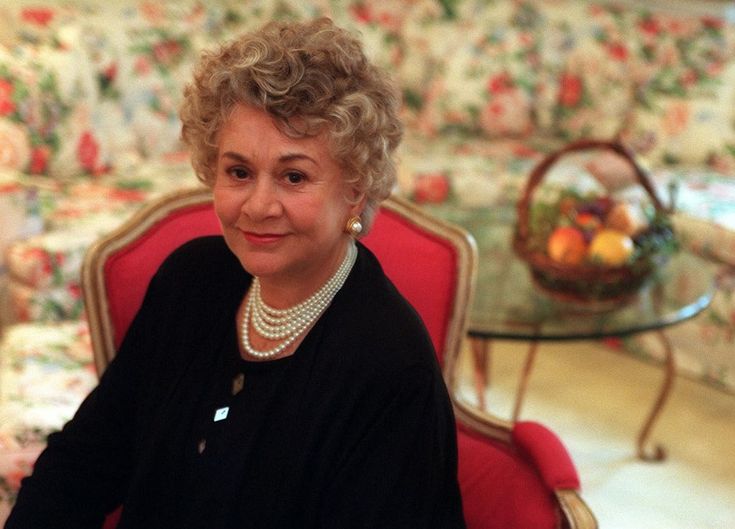Joan Plowright is a name synonymous with excellence in theatre and film. With a more than six decades-long career, she has established herself as one of Britain’s most distinguished actresses. From her commanding presence on the stage to her memorable roles on screen, Plowright’s career is a testament to her immense talent, versatility, and dedication to the craft of acting.
Early Life and Introduction to Theatre
Born on October 28, 1929, in Brigg, Lincolnshire, England, Joan Ann Plowright was raised in a family with a strong appreciation for the arts. Her father, William Ernest Plowright, was a journalist and newspaper editor, which exposed her to literature and storytelling from a young age. She developed an early passion for acting and pursued her studies at the prestigious Old Vic Theatre School in London.
Plowright’s professional acting career began in the early 1950s, performing in regional theatres before making her way to the London stage. Her exceptional talent quickly gained recognition, leading to her association with the English Stage Company at the Royal Court Theatre. This was a significant moment in her career, as she became a prominent figure in the British theatre scene.
Breakthrough in Theatre
One of Plowright’s most defining moments came in 1956 when she played the lead role in Arnold Wesker’s “Roots.” Her performance as Beatie Bryant was widely praised and established her as a leading actress of her generation. She continued to earn acclaim in productions such as “A Taste of Honey” and “Saint Joan,” demonstrating her remarkable ability to bring complex characters to life.
In 1961, Plowright delivered a standout performance in “The Caretaker” by Harold Pinter, solidifying her status as a formidable actress. That same year, she won a Tony Award for her performance in Jean Anouilh’s “The Chairs”, further proving her dominance in the theatre world.
Marriage to Laurence Olivier and Impact on Her Career
In 1961, Joan Plowright married the legendary actor Laurence Olivier, one of the most celebrated figures in theatre history. Their marriage not only made headlines but also had a significant impact on her career. Plowright often collaborated with Olivier in various productions, both on stage and in film. She was a member of the National Theatre Company, founded by Olivier, and performed in some of its most renowned productions, including “Uncle Vanya” and “The Three Sisters.”
While her marriage to Olivier enhanced her prominence, Plowright’s talent and dedication ensured that she was not overshadowed by her illustrious husband. She continued to carve out her own legacy in both theatre and film, proving herself as an actress of great depth and skill.
Transition to Film and Television
While Plowright was an established theatre actress, she also made a successful transition to film and television. She appeared in various British and Hollywood films, displaying a versatility that made her a sought-after actress.
One of her earliest notable film roles was in “The Entertainer” (1960), where she starred alongside Laurence Olivier. This film, directed by Tony Richardson, introduced her to a broader audience and marked the beginning of a successful film career. Over the years, she delivered exceptional performances in movies such as:
- “Equus” (1977) – A psychological drama directed by Sidney Lumet.
- “Avalon” (1990) – A family saga where she played the matriarch.
- “Enchanted April” (1992) – A critically acclaimed film that earned her a Golden Globe Award for Best Supporting Actress.
- “Dennis the Menace” (1993) – A beloved family film where she played the sweet yet stern Mrs. Wilson.
- “Tea with Mussolini” (1999) – A memorable performance alongside Judi Dench, Maggie Smith, and Cher.
Plowright also shined in television productions, earning Emmy nominations for her performances in “Stalin” (1992) and “Sarah, Plain and Tall” (1991).
Awards and Recognition
Throughout her illustrious career, Joan Plowright has received numerous accolades. She has won a Tony Award, a Golden Globe, and a BAFTA, and has been nominated for an Academy Award. Her contribution to the arts was recognized in 2004 when she was made a Dame Commander of the Order of the British Empire (DBE), an honor that solidified her status as one of Britain’s most respected actresses.
Later Years and Retirement
In the later years of her career, Plowright continued to work in film and television, although she gradually reduced her workload. Sadly, she developed macular degeneration, a condition that led to significant vision loss, which ultimately forced her to retire from acting in 2014.
Despite stepping away from the spotlight, Plowright remains a revered figure in the world of acting. Her contributions to theatre and cinema have left a lasting impact, and her work continues to inspire new generations of actors and audiences alike.
Legacy and Influence
Joan Plowright’s legacy is one of excellence, perseverance, and artistry. She navigated the demanding worlds of theatre and film with grace, demonstrating a remarkable ability to portray characters with authenticity and depth. As one of the few actresses who seamlessly transitioned from the stage to the screen, she has paved the way for many performers who aspire to achieve success in multiple mediums.
Her influence extends beyond her performances. Plowright has been an advocate for the arts, supporting various theatre organizations and acting schools. Her dedication to her craft and her unwavering commitment to storytelling make her a true icon of stage and screen.
Conclusion
Joan Plowright’s journey from a young aspiring actress in Lincolnshire to an internationally celebrated performer is a story of passion and resilience. Her remarkable body of work, spanning theatre, film, and television, showcases her immense talent and dedication. Even in retirement, her legacy continues to thrive through the countless performances that remain timeless.
A true doyenne of British theatre and cinema, Joan Plowright’s name will forever be associated with artistic brilliance, making her one of the most enduring figures in the history of performing arts.






